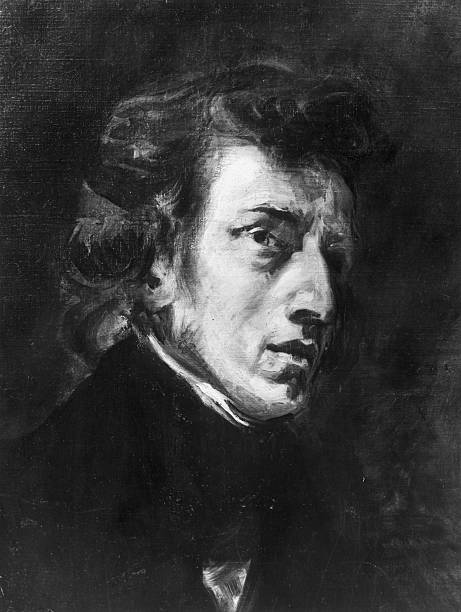Frédéric Chopin

Chopin Nocturne in C minor Op. 48 No. 1
The Nocturne in C minor Op. 48 no. 1 is part of a set of two nocturnes written by Frederic Chopin in 1841. They were then published the following year in 1842. The improvements in Chopin’s Nocturnes in contrast to John Fields Nocturnes are mostly in technique. The first Nocturne in C minor is built in ternary form. It consists of an A section, a B section, and then an A section again. If you are interested in purchasing this Nocturne, click here.
A – Lento
The chord structure for the beginning of the A section is the I chord followed by the VI chord on beat three. In the second measure, it starts with the V chord and goes back to the one chord. In the third measure it goes back to the VI again and then the II followed by the V chord in the fourth measure. It returns back to the I chord in the third beat of the fourth measure.

The first measures of the C minor Nocturne follow the same harmonic structure as Chopin’s C minor Prelude Op. 28 No. 20. The Nocturne start with the tonic in the bass which is supposed to have a Russian bell-like sound. The G in the melody is almost like a sigh because there is a rest after it which then goes to Ab and then back to G. The rhythmic stream in this section breaks into groups of two and four. The most subdivision we see in this section is eighth notes and sixteenth notes which are all duple groupings.
This section has a feeling of anguish which becomes more severe by the end of this piece. It seems to have boundaries that are more fluid and then gradually become more dramatic.
B. – Poco Piu Lento “Chorale”
In this section, the key changes to C major. It is marked sotto voce in the first measure of this section. The entire first statement of the chorale has the same rythmic structure from the measures 25 – 36. In measure 39, the restatement of the chorale theme is interrupted by a rising chromatic figure. This new rhythmic stream interrupts the previous melodic and rhythmic flow by introductng the sixteenth notes grouped as triplets. The chorale theme attempts to continue until in measure 46 where the triple stream takes over.



A. – Doppio movimento
We would think that the contrasting B section would return back to the A section in its entireness. However, it does not. Beginning in measure 49, the restatement of the A them also carries the triplet pattern found in the B section. It seems as if the momentum of the triplet pattern gathered to such a point that it could not have been stopped. The result was two opposing rhythmic strains side by side. You have one dividing the beat into four sixteenth notes and one dividing it into eighth-note triplets which creates a hemiola effect. The B section builds in dynamic level, rhythmic interest, and range. What happens in the restatement of the A section is a result of the developmental B section.

Conclusion
The three sections can be described as the “a” section setting the stage for the main theme. The B section gradually building tension through rhythmic, range, and dynamic streams. Then the restatement of the A section continuing the same rhythmic pattern form the B section with larger harmonic structures and more textural density. The rhythmic triplet pulse creates tension with the melody, especially starting from measure 54 onward. Measure 71 onward it begins to reduce the density of the texture of this piece. This piece presents a departure from Chopin’s other Nocturne’s because it does not follow the da capo form and instead, seems as if it is through composed.
Some of the links on this site are affiliate links, which means that at no cost to you, I earn a commission if you click on them and buy something. This helps me keep the lights on around here. Naturally, I don’t recommend a product unless I have used and benefited from it myself, or I have researched it enough to determine it to be of good quality and likely to benefit my readers. Thanks for reading!
Recent Comments